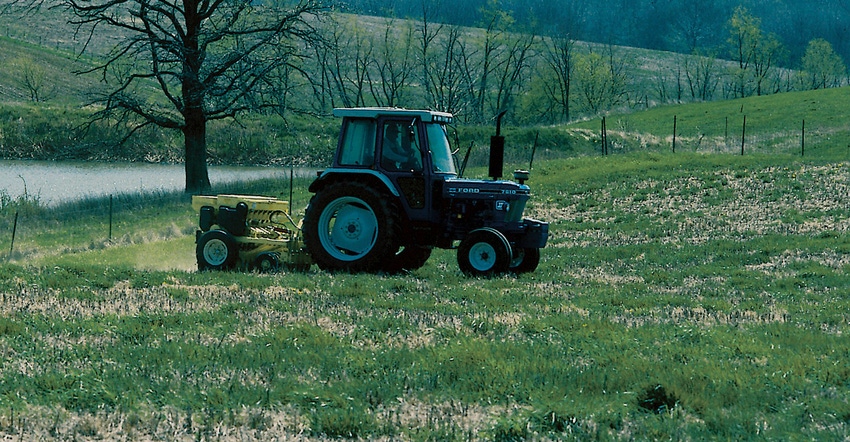February 13, 2017

Financial and conservation planning assistance are available through local USDA Service Centers for Iowa farmers and landowners interested in adding wildlife habitat on their land. The next cutoff deadline to fund applications is March 17.
Through the Environmental Quality Incentives Program, USDA’s Natural Resources Conservation Service offers conservation planning assistance and guidance for using financial assistance programs to implement conservation practices that provide wildlife habitat. NRCS is offering eligible practices to Iowa landowners at the highest payment rate available.
The eligible list includes practices that enhance existing forestland or grassland habitat, improve aquatic habitat, and establish or enhance woody or wetland habitats. Example practices include brush management, conservation cover, upland wildlife habitat management, streambank protection and wetland restoration.
Paul Goldsmith, EQIP coordinator for NRCS in Iowa, says many of the practices offered provide compatible uses. “EQIP helps farmers promote production and environmental quality as compatible goals,” he notes. “For example, a livestock producer may want to adopt brush management to remove unwanted woody species to improve forage production and native prairie production for wildlife.”
NRCS works collaboratively with the Iowa Department of Natural Resources to implement many of the EQIP wildlife habitat applications, by providing planning assistance. Aaron Lumley with the Iowa DNR says, “EQIP is helping many Iowa landowners improve the health of their woodlands, which is increasing their future income, as well as improving wildlife benefits.”
For more information about conservation planning and programs to help you achieve your ag production goals, visit your local USDA Service Center or go online to ia.nrcs.usda.gov.
Improving monarch butterfly habitat
In other recent conservation news, the Monarch Collaborative, a group of organizations working to support monarch butterfly conservation on the agricultural landscape, welcomed the U.S. Fish and Wildlife Service’s recent agreement with NRCS that provides farmers and agricultural producers with predictability as they use practices to improve monarch habitat. The federal agencies recently issued a conference report laying the groundwork for design and use of conservation practices and enhancements to support monarch butterfly habitat and population growth.
The included area initially focuses on 10 states: Indiana, Illinois, Iowa, Kansas, Minnesota, Missouri, Ohio, Oklahoma, Texas and Wisconsin.
“Farmers, ranchers and landowners across these states have key roles to play, in collaborating with private companies, conservation organizations and government agencies to help address the challenges the monarch butterfly population faces,” says Eric Sachs, science, technology and outreach lead at Monsanto.
“This timely and important step provides farmers and other key ag stakeholders with much needed predictability surrounding their operations as they support monarch butterfly conservation and work to produce the food, feed, fiber and fuel the world needs,” says Wayne Fredericks, an Iowa farmer on the board of the American Soybean Association.
Agreement supports agricultural efforts
The conference report and federal guidance is especially important given the ongoing review of monarch butterflies under the Endangered Species Act. The U.S. Fish and Wildlife Service has until June 2019 to determine whether or not to list the species, which provides farmers and ag stakeholders with limited time to implement effective voluntary conservation efforts. Fish and Wildlife Service officials say they hope through conservation measures on ag lands and other private and public lands, the monarch butterfly won't have to be listed as endangered.
In the agreement, the U.S. Fish and Wildlife Service provides for farmers who use conservation measures under an NRCS-approved conservation plan, long-term clarity that they will be in compliance with the Endangered Species Act for their conservation actions should the species be listed. Producers interested in monarch conservation practices should contact their local USDA service center for NRCS assistance in enrolling through several farm bill programs, including the Environmental Quality Incentives Program, Conservation Stewardship Program and the Agricultural Conservation Easement Program.
The Monarch Collaborative is an initiative to promote collaborative strategies to support a sustainable population of monarch butterflies while meeting ag productivity and conservation goals. Membership includes organizations spanning the research community, agricultural production, conservation causes, public agencies and others working to develop solutions to address this challenge. To learn more about the Monarch Collaborative, visit keystone.org/monarch.
Source: USDA
You May Also Like




